Solar and high grid voltage
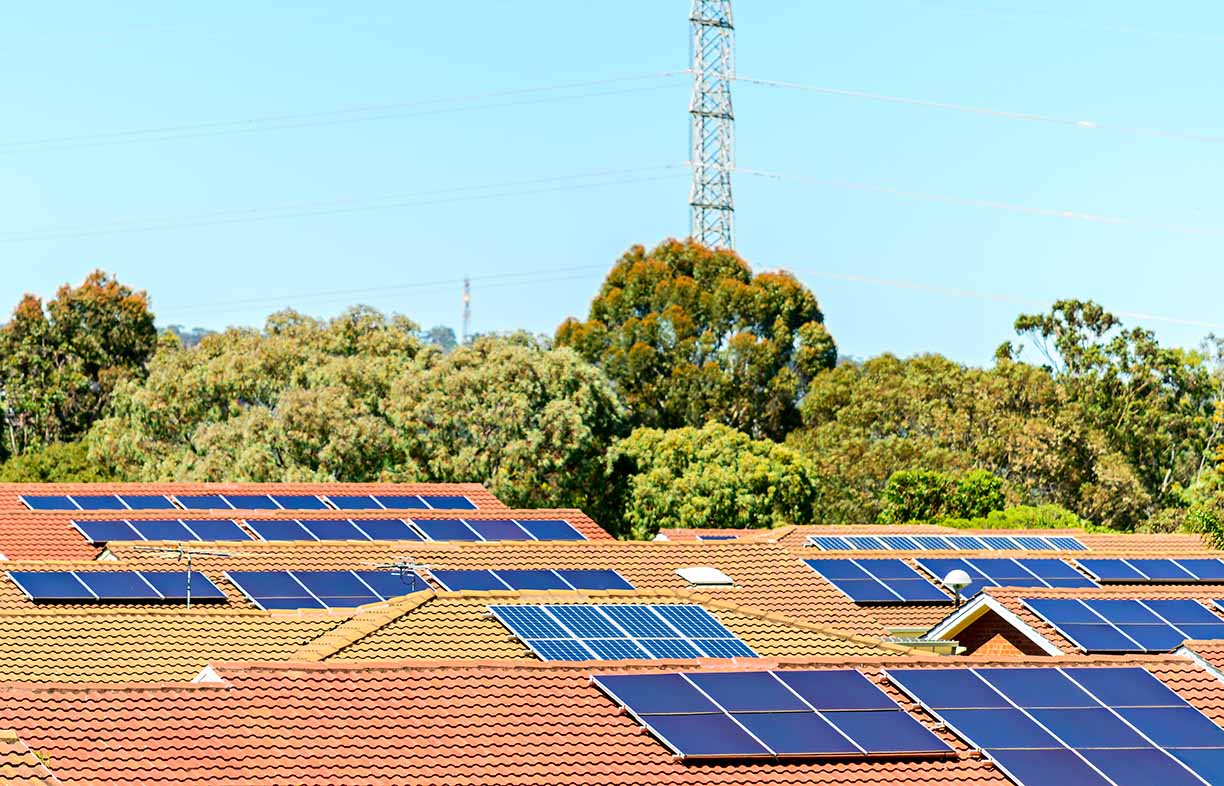
There’s been some recent attention in the news linking the boom in solar power with spikes in grid voltage. Renew energy analyst Andrew Reddaway looks at the issue.
Excess solar power feeding into the grid is a good thing because it displaces generation by centralised generators, putting downward pressure on electricity prices and reducing emissions. But it is possible to have too much of a good thing if the local electricity network infrastructure cannot properly ‘digest’ solar exports.
We at Renew have had many anecdotal reports of this happening. Some solar households have discovered that their system is not generating as much energy as it should, especially around midday on sunny days. Some households have noticed that at times the voltage of their electricity supply is much higher than the nominal 230 or 240 volts.
We’ve also seen network companies refuse new solar connections because the local area can accept no more solar due to voltage issues.
Renew has been monitoring this issue for several years. Networks have had clear warning of a future problem since at least 2012, when the Australian Energy Market Operator (AEMO) forecast that by the 2030s a majority of suitable roofs might host solar panels. However, planning in this area has been lacking.
Why does voltage vary in my street?
Electricity flows down your street a bit like water down a hose in your garden watering a row of trees via drippers. Your garden tap pushes water into the hose, like your local transformer pushes electricity into the wires. Your transformer is a big grey device, probably up a pole somewhere in your street or around the corner.
The tap supplies water at a high pressure, but as it progresses down the pipe, friction and offtake by drippers progressively reduces this pressure to a low point at the final tree. The electrical equivalent of pressure is voltage, which starts at a relatively high level (e.g. 250 V) at the transformer and inevitably drops to a lower level at the final house (e.g. 225 V). Your appliances, although nominally rated for a voltage of 230 V or so, can tolerate this sort of range.
The natural drop in voltage down the line increases when houses are consuming more electricity, just as the reduction in water pressure would be greater if the drippers were swapped for higher-flow replacements. During an evening heatwave when everyone’s cooking dinner with air conditioners blasting, there’s a risk that voltage at the final house may drop below the minimum allowed value of 216 V.
Such low voltages are harsh on some voltage-sensitive appliances and risks wearing them out prematurely. To avoid this occasional issue, your local electricity distributor needs to set the transformer to a relatively high voltage.
However, if the distributor sets the transformer voltage too high, houses close to the transformer may sometimes experience voltages above the maximum allowed 253 V, which also risks damaging appliances. Most transformers cannot vary their voltage dynamically—any tweak requires a truck visit and possibly a brief local blackout.
On top of the existing variation in voltage, solar systems pose additional challenges to the distributor’s voltage balancing act. When a households’ generation exceeds its consumption, the solar inverter pushes electricity into the grid. Like a small pump pushing in supplementary water mid-way along the hose, the voltage (pressure) at this point is increased. This increases the chance that some households will exceed the maximum allowed voltage, especially around midday on a sunny weekday with high generation and low consumption.
Why is my inverter sometimes throttling its output?
Since October 2016, all solar inverters connected to the grid have been required to manage their generation based on voltage. As voltage at the inverter approaches the upper limit, the inverter will proactively reduce its generation more and more (called throttling), until it throttles itself off completely. This ensures that solar households are not causing their neighbours’ voltage to exceed the allowed limits and is an important feature to enable higher uptake of solar.
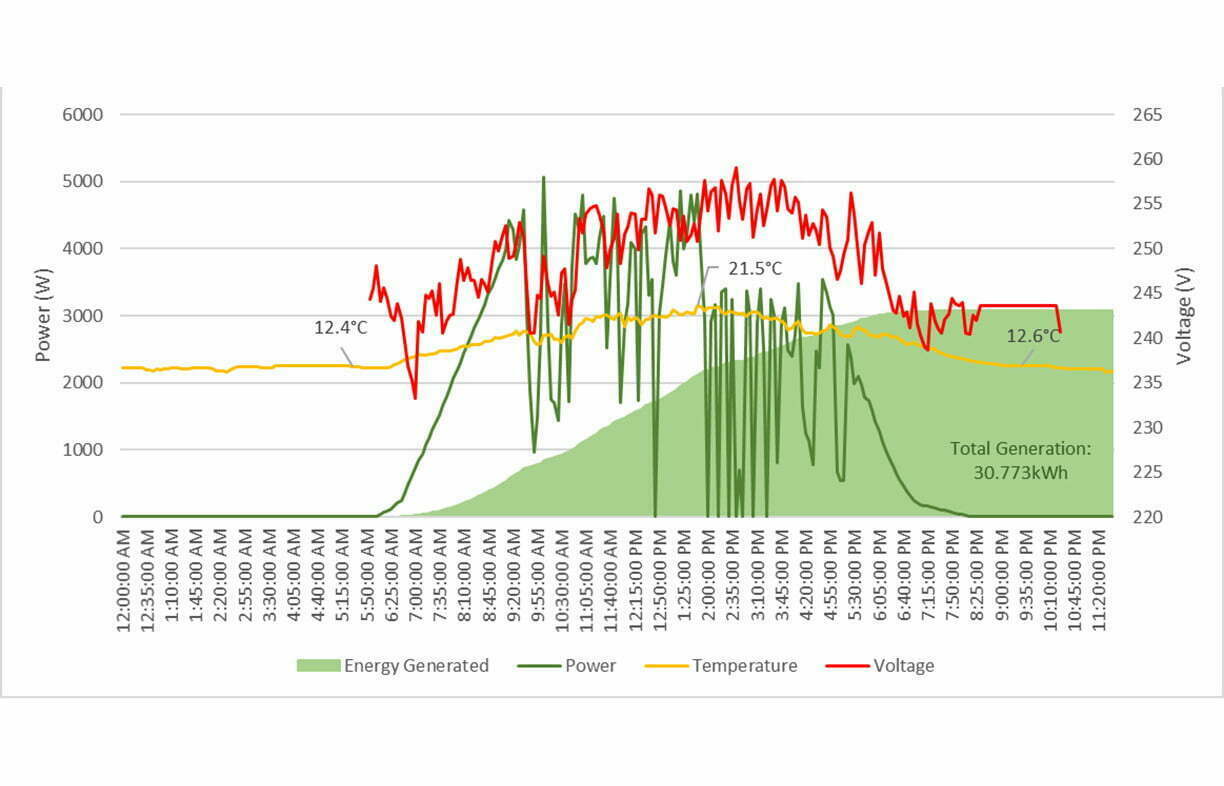
What is the impact of inverter throttling?
This is a key but difficult question to answer, and depends on a range of factors including:
- how much solar PV is installed in your street/local part of the network
- where your house is situated in relation to the transformer
- the settings of the transformer
- the weather conditions on any given day
- the load in the street/ local part of the network in any given part of the day.
Whereas for one solar household, inverter throttling may only be a problem for a few hours a year, for another, inverters may operate significantly below capacity for tens or hundreds of hours per year, leading to significant losses in value of the system.
Figure 1 shows an inverter shutting down eight times between 12.30 pm and 3.30 pm due to high grid voltage. Despite this, the system still generated over 30 kWh for the day.
What should households do now?
If you’d like to check your house’s voltage, an easy way is to get an inexpensive plug-in power meter. In addition to measuring an appliance’s energy consumption, most of these also tell you the voltage. You can note the voltage at different times, e.g. late at night versus a sunny weekday afternoon.
If you have a solar system, it’s a good idea to check at least occasionally that it’s generating as much as it should. It may be set up with historical monitoring that you can check on a web page. If not, you may be able to read the inverter’s screen and compare a sunny day’s generation against some other nearby solar systems as reported on PVOutput.org. Most solar inverters will also state their output voltage, which will be slightly higher than the grid voltage. Your solar installer may be able to configure an email alert whenever your inverter throttles itself.
If you are definitely being affected by high grid voltage, contact your local distributor and request they adjust your local transformer. This is not always possible, but we’ve had reports from householders who have achieved success this way. The distributor may send someone out to measure the voltage; if possible, they should do this around midday on a sunny day.
What if I’m considering installing solar?
If you’re considering installing a solar system, it might be wise to get in early as networks may tighten their connection limits over time. Talk to your installer about ways to minimise the problem of high voltages. For example, fatter cables between the inverter and your switchboard will reduce the voltage rise within your own premises, minimising inverter throttling. If you have three-phase power, selecting a three-phase rather than a single-phase inverter will achieve the same thing even more effectively.
Voltage optimisers
Recently there have been some media stories on household voltage optimisers. These are gadgets that an electrician can install in or near your meter box to moderate your voltage. Their scope to reduce your bills is limited unless a significant proportion of your solar generation is being throttled.
But use of these devices to free up your solar exports is problematic, because those unshackled exports will exacerbate your neighbours’ over-voltage issue. This technology can, however, be useful for larger businesses using high-powered electrical equipment in commercial or industrial processes.
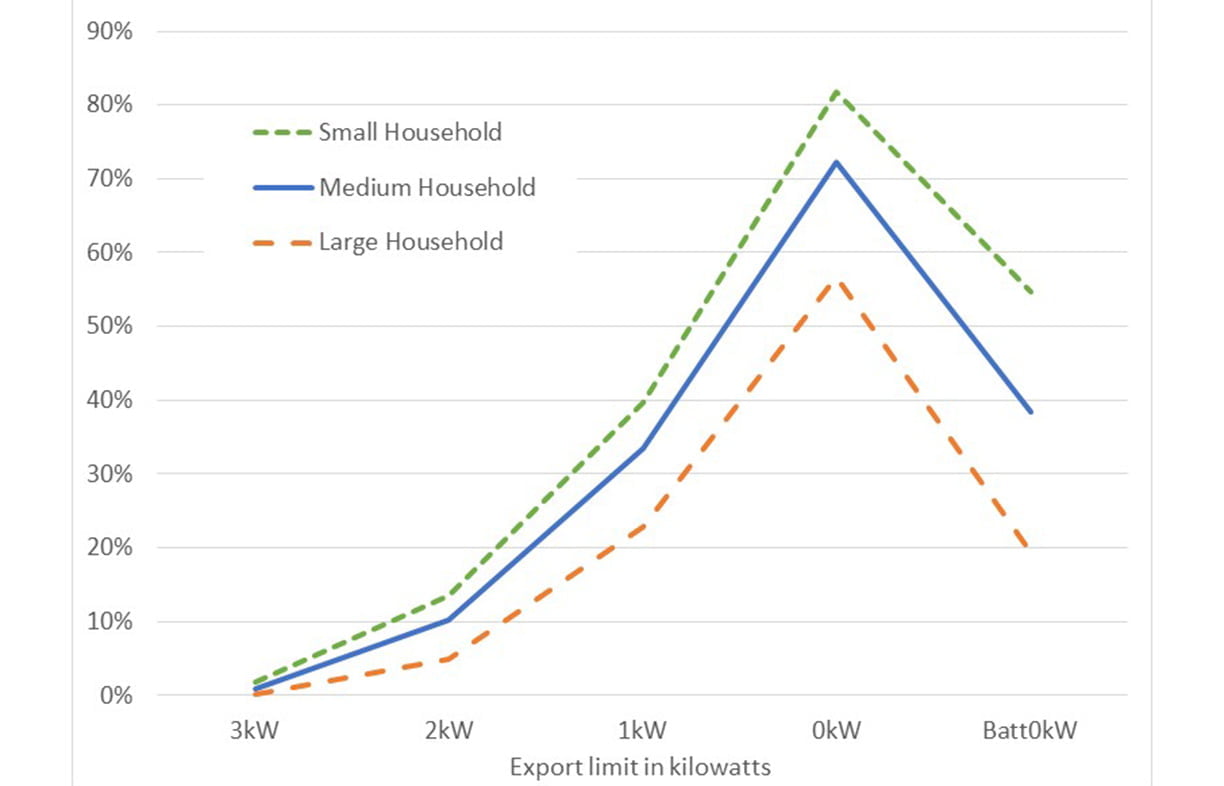
Limits on new connections
Renew has significant experience of the treatment of new connections by distribution businesses through our members and other projects with which we are involved. To date, we have witnessed distribution businesses:
- outright refusing grid connection to new solar installation applications
- limiting the size of the system (specifically the inverter capacity), irrespective of the expected volume of export to grid
- limiting exports to the grid to a lower capacity than the overall system size (e.g. a 5 kW export limit on a 10 kW system)
- prohibiting any export to the grid at all (known as zero net export).
The most concerning of these are the first and last.
Where grid connection is refused, often a very blunt approach is taken. Some distribution businesses use a figure of 30% of household solar penetration as a proxy for refusing new applications, irrespective of the actual relationship between local installed solar capacity and line/transformer capacity. And no consumer information or publicly available data is produced to guide consumers on when the 30% threshold will be reached in any given area and how any grid connection/export limiting policy will be implemented.
Where grid connection is approved but exports are limited to zero, this is also a significant problem for new solar owners.
The impact of export limiting
So what is the impact of export limits on solar system generation? To help answer this question, we used our simulation tool, Sunulator, to model the impact of export limiting on a 5 kW solar system for three different household sizes in a range of locations around Australia.
All were assumed to use efficient electric appliances (no gas) with a 6 Star building energy rating. The small home consumes on average 8.5 kWh per day, compared to the medium at 12.3 and large at 20 kWh.
As can be seen in Figure 2, for the medium-sized 5 kW solar home in Sydney, a zero-export limit reduces solar generation by more than 70%, while a 3 kW export limit barely reduces solar generation at all. This is because the solar system rarely generates at its full-rated power and its generation is partially ‘soaked up’ by on-site consumption.
Smaller homes and those using gas appliances will be affected more severely by export limiting, since they have less opportunity to make use of on-site electricity consumption.
We also found that when export to the grid is prohibited, adding a battery to the solar system helped significantly, especially for the higher-consumption households.
The battery was modelled with a usable capacity of 10 kWh and the ability to forecast weather and consumption to preferentially charge up during periods when export limiting was likely. A battery without this smart feature would tend to charge up early on a sunny day, leaving no room to ‘soak up’ afternoon excess generation.
Using a simple grid import tariff of 25 c/kWh and feed-in tariff of 10 c/kWh, prohibiting exports increased the annual bills of the Sydney medium-sized household by just over $500 per year. Adding the battery significantly reduced this financial loss.
Figure 3 shows how the generation loss varies around Australia for a 5 kW solar system and a medium-sized household. Export limits have the least impact on Hobart households because this climate usually generates at a lower level which is more easily soaked up by on-site consumption.
This modelling shows that if export limiting is necessary, it’s much better to be permitted some export rather than none at all. For a 5 kW solar system, a 1 kW limit, although still severe, has only about half as much impact on solar generation as a zero limit. Raising the limit from 1 kW to 2 kW cuts the impact dramatically.
We also modelled the impact for a Sydney household with a 10 kW solar array on an 8 kW inverter, as this configuration is becoming more popular. As Figure 4 shows, at a 5 kW export limit, clipping was between 4% and 8%, but much higher for a 3 kW, 1 kW or 0 kW limit.
Distribution network business approaches
To date, Renew has found no consistency across (or even within) distribution network businesses as to how they manage solar export limiting policy.
Of greater concern, Renew has also discovered that, despite this issue having been recognised as a potential problem several years ago, network businesses are only just now beginning strategic planning for how increasing levels of distributed generation can be accommodated within the system.
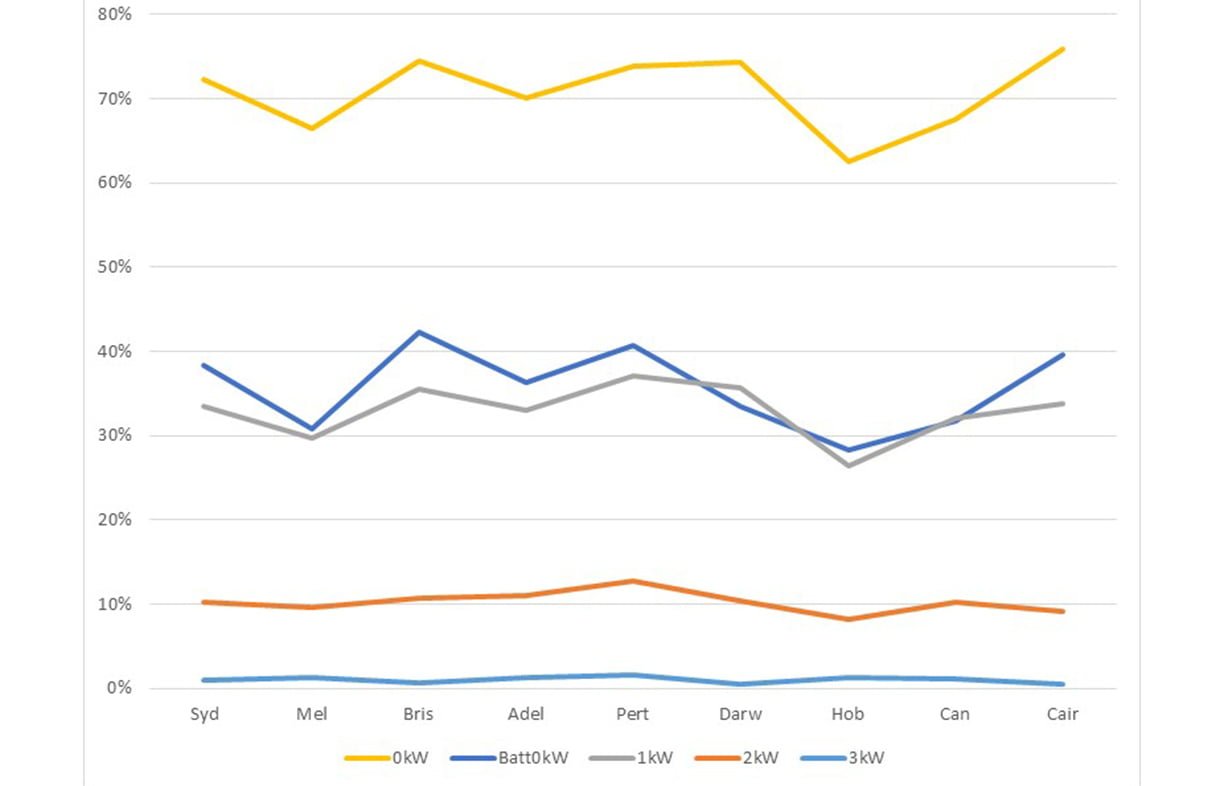
Can high voltage increase my bill?
With modern appliances, it’s very unlikely your bill will be raised significantly due to higher energy consumption from high voltage.
Appliances using a simple electric element will operate at higher power levels when the voltage is higher. Incandescent lights glow brighter, and ovens, electric water heaters and bar radiators run hotter. But in most cases, this doesn’t result in a higher bill, because the water tank or room just achieves its desired temperature a little quicker and the appliance switches off.
Most electronic gadgets and most modern motors internally moderate the voltage anyway, so their energy consumption is unaffected.
Potential longer-term solutions
A partial solution is to ‘soak up’ solar exports around the middle of the day. Household batteries can achieve this, but only if they’re programmed to delay their charge until late morning on sunny days; otherwise they’ll likely already be full by the time solar generation starts to peak.
There will still be periods where this won’t work so well, such as during holiday periods when many people are away from home when the battery will still be full from the previous day. Incentivising panels facing east and west rather than north would also have some impact; Victoria is already moving in this direction with its time-varying feed-in tariff.
A more effective measure is to shift electricity consumption to the middle of the day, soaking up the solar exports and minimising voltage rise. Electric hot water tanks are a prime example. One network in Queensland has already started to change their timers away from 1.00 am. Pool pumps can likewise be run during sunny hours. Electric vehicles can be charged preferentially during midday hours, for example in office building carparks.
Ideally our local networks would be strong enough to digest solar exports even for the projected future high levels of solar uptake. One solution is smarter transformers that dynamically adjust their voltage as conditions change throughout the day. If the wires along the street were fatter, voltage drop would be minimised. However, these assets have long lifespans (such as 30 or 40 years), so rapid replacement is unlikely without additional cost.
One network in Victoria has raised an interesting proposal: when voltage is high, they suggest sending a signal to all solar inverters in the area to reduce their generation. This would not solve the issue, but it would spread the loss in generation more fairly across solar households, rather than have it naturally concentrate on those with highest voltage.
Perhaps the most promising network solution is a line voltage regulator, which is a cabinet that can be installed part-way along a street affected by over-voltage. This would boost voltage from that point onward, enabling the transformer to be set to a lower voltage. They’ve already been used in Europe since 2015.
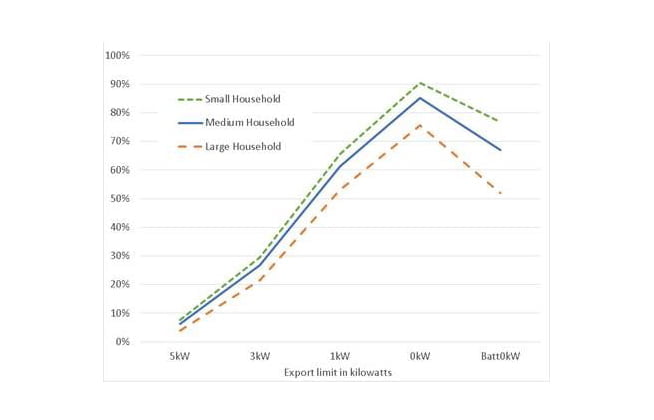
Who should pay to augment the networks?
In the normal process, network upgrade costs are eventually passed through to all electricity consumers via their bills. If this process is followed for upgrades specifically required for solar exports, this results in an implicit cross-subsidy from non-solar households to solar ones. This is how network upgrades required to support the uptake of air conditioners were paid for, for example.
Does our community support such a cross-subsidy for solar? Ultimately this is a political question. A similar example is rural and remote consumers—their network infrastructure is relatively expensive per premises, so these households are subsidised by their city cousins. Surveys have found that people generally approve of this city–country cross-subsidy. Likewise, some networks have surveyed their customers and found that people generally support sharing the cost for upgrades required to allow more rooftop solar in their networks.
Alternatively, solar households could pay a special charge to cover the network upgrades required to support their electricity exports. This could be a one-off connection charge, or an ongoing solar export tariff charged according to the volume of solar exports. Charging a solar export tariff would require a change to the National Electricity Rules, a process which generally takes years to conclude.
How can this issue be progressed?
Renew continues to advocate for consumers on this issue and related topics in a range of network and other policy consultation processes. We are pushing for a proper study to report on voltage levels and quantify the current and future impact on solar consumers of lost generation. This would also estimate the costs of different options to resolve the problem, so that the various interests can be weighed up by decision-makers.
Regardless of the level of investment devoted to our networks, policies regarding grid connection of renewable energy must become more consistent and more transparent across our electricity system.
Find the full report at renew.org.au/our-news/high-grid-voltage-and-solar
Contact us!
If you are experiencing problems with getting a new solar system connected or reduced generation from your existing system associated with high voltage at your premises or within your street, Renew would like to know. Please email Damien Moyse, Renew’s policy and research manager, at damien@renew.org.au with the subject line ‘Solar and voltage rise’.
Related articles
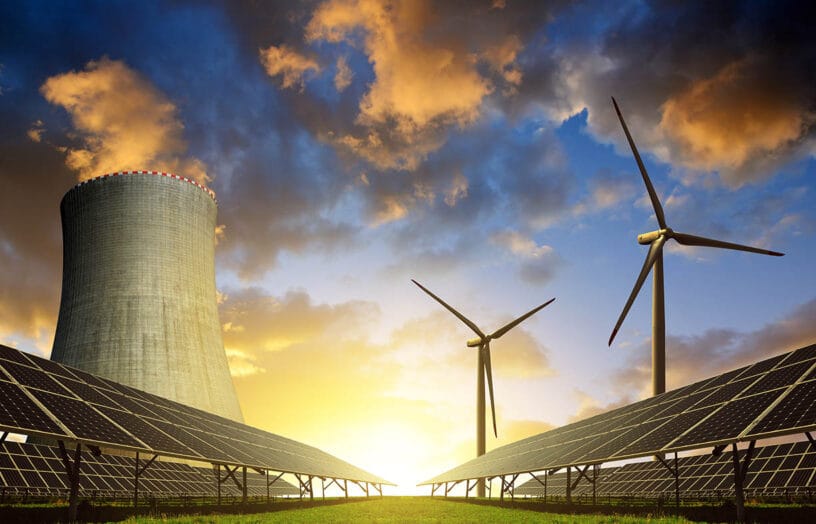 ReNew
ReNew
Refuting myths about nuclear and renewable energy
There’s a lot of talk at present about nuclear energy being a strong contender in Australia’s energy market. But how much is political spin getting in the way of fact? Dr Mark Diesendorf unpacks some of the myths that are out there.
Read more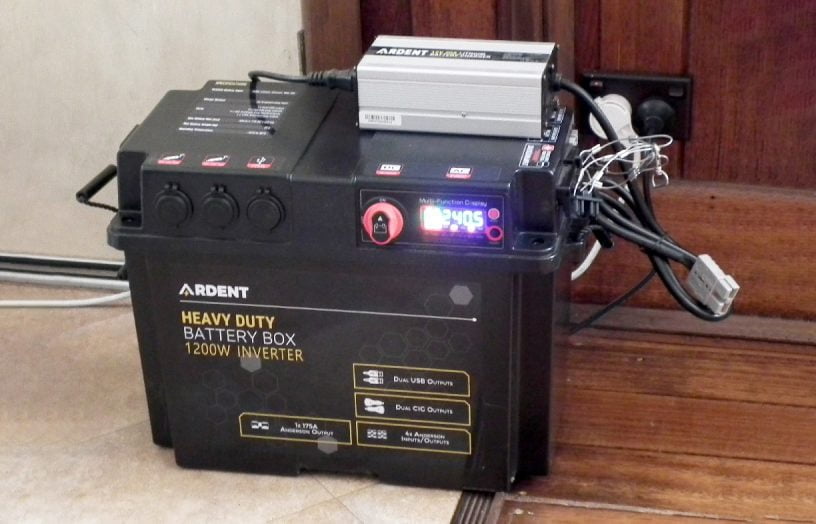 DIY
DIY
Deleting the genset
If you have the need for the occasional use of a generator, then why not replace it with a much cleaner battery backup system instead? Lance Turner explains how.
Read more Renewable grid
Renewable grid
Is a floating solar boom about to begin?
Rob McCann investigates the world of floating solar energy systems.
Read more

